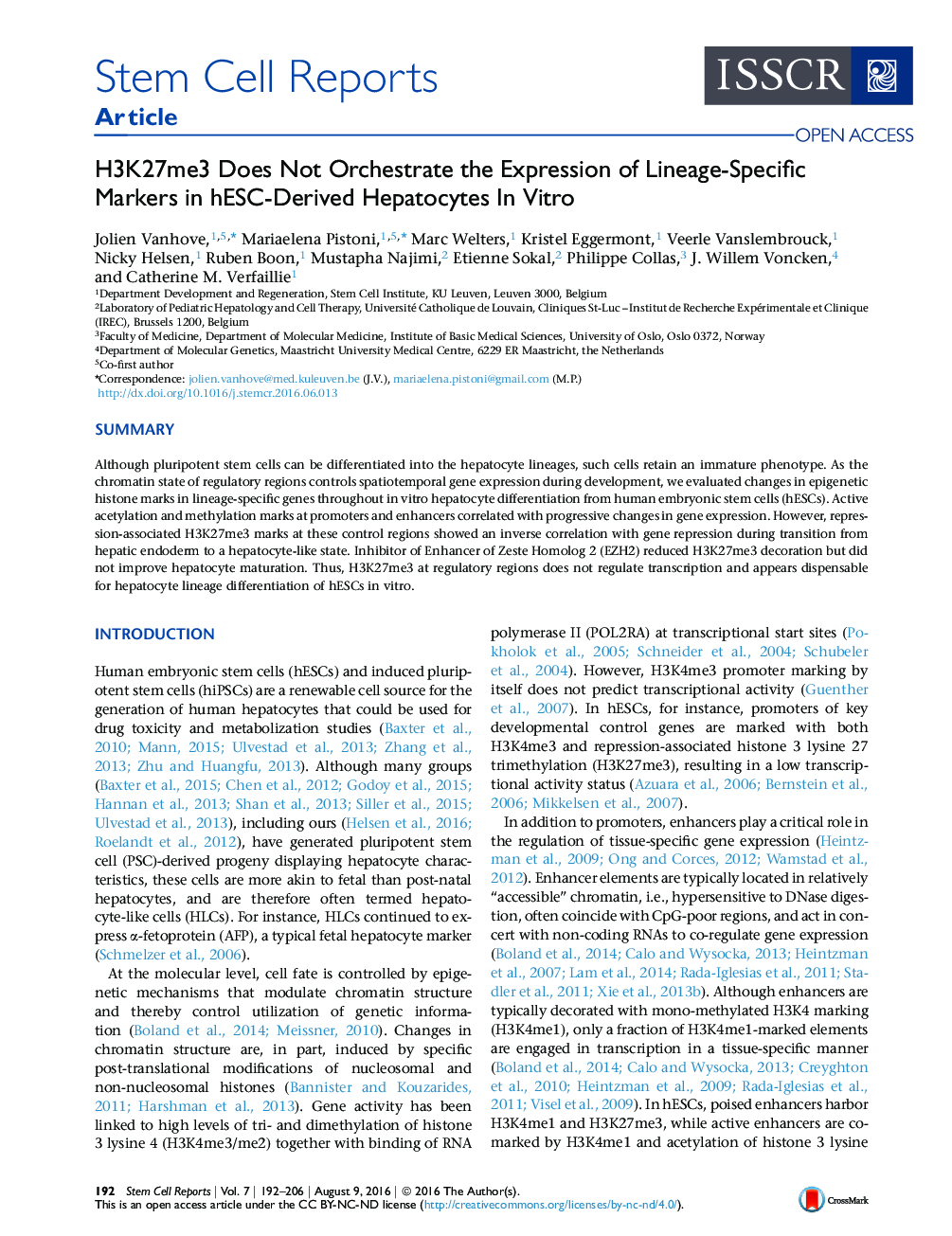| Article ID | Journal | Published Year | Pages | File Type |
|---|---|---|---|---|
| 2093212 | Stem Cell Reports | 2016 | 15 Pages |
•Epigenetic studies to understand hepatocyte differentiation from human PSC•Dynamics in histone profile correlate with alterations in gene transcription•hESC-derived HLCs have higher H3K27me3 mark at regulatory regions compared with PHHs•Reducing H3K27me3 by EZH2 inhibition did not improve hepatocyte differentiation
SummaryAlthough pluripotent stem cells can be differentiated into the hepatocyte lineages, such cells retain an immature phenotype. As the chromatin state of regulatory regions controls spatiotemporal gene expression during development, we evaluated changes in epigenetic histone marks in lineage-specific genes throughout in vitro hepatocyte differentiation from human embryonic stem cells (hESCs). Active acetylation and methylation marks at promoters and enhancers correlated with progressive changes in gene expression. However, repression-associated H3K27me3 marks at these control regions showed an inverse correlation with gene repression during transition from hepatic endoderm to a hepatocyte-like state. Inhibitor of Enhancer of Zeste Homolog 2 (EZH2) reduced H3K27me3 decoration but did not improve hepatocyte maturation. Thus, H3K27me3 at regulatory regions does not regulate transcription and appears dispensable for hepatocyte lineage differentiation of hESCs in vitro.
Graphical AbstractFigure optionsDownload full-size imageDownload as PowerPoint slide
